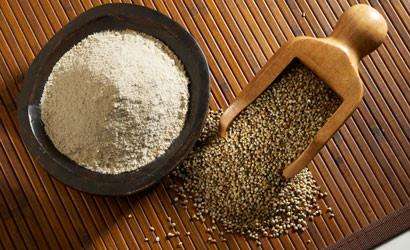In the World of grains, some have always taken center stage while pushing others to the sidelines. Bajra is one such neglected grain that is frequently derided as “boring” by people who are ignorant of its extraordinary nutritional potential and adaptability.
Since it grows best in arid climates, bajra, also known as pearl millet, has long been a staple food in Indian cuisine. The outstanding nutritional profile of bajra, which is sometimes overlooked in favor of more widely consumed grains like rice and wheat, has attracted the attention of people who are concerned about their health.
NUTRITIONAL POWERHOUSE
The great nutritional value of bajra is one of its most important benefits. It is a good source of dietary fiber, certain vitamins (including the B vitamins), and minerals like iron, magnesium, and phosphorus. This grain is also gluten-free, making it a great option for people with celiac disease or gluten allergies.
HEALTH ADVANTAGES
Numerous health advantages of regularly consuming bajra have been found through research. Some of them are as follows:
Heart Health: Bajra is renowned for assisting in the reduction of harmful cholesterol, which lowers the risk of heart disease. A bowl of bajra porridge in the morning can show good improvements in your lipid profile.
Diabetes Management: It is a good choice for those with diabetes because of its low glycemic index (the power to spike up your blood sugars) and high fiber content, which help to maintain stable blood sugar levels. The Bajra-nut laddus are a great replacement for your over-loaded, sugary sweets and desserts.
Weight control: The high fiber content of bajra encourages a sensation of fullness, which helps with weight control and discourages overeating. You can either consume bajra bhakris OR can use them in some amount to make multi-grain rotis.
Digestive Health: Bajra’s dietary fiber promotes a healthy digestive system and may aid with common digestive problems.
Bone Health: Bajra, which is high in calcium and magnesium, supports healthy bones and teeth. Regular consumption during the middle-age (25-45years) will prevent the occurrence of knee-joint pains, back aches, etc.
INTRODUCTION TO YOUR LITTLE-ONES:
Yes! It’s a great idea to introduce this super-food to your children at an early age! Introduce in different forms, one at a time. Bajra bhakris pizza, pancakes, muffins, etc. are innovative and healthy ways to introduce it to the children!
MULTIPURPOSE IN THE KITCHEN
Bajra is adaptable in the culinary sphere as well. Flatbreads, oatmeal, pancakes, and even desserts can all be made using it. It is a popular option for people looking for variety in their meals because of its nutty flavor, which gives many recipes a distinctive depth.
WHY IS BAJRA MAINLY CONSUMED IN WINTER SEASON?
- It’s a warm and nutritious grain that provides essential energy and warmth during winter season.
- Good source of fiber which aids digestion and helps in maintain body temperature.
- It is high in minerals like iron so its beneficial in preventing cold induced illnesses by boosting immunity.
So, friends it is clear that Bajra, which was once dismissed as “boring,” is finally being acknowledged for its remarkable nutritional profile, health advantages, and culinary diversity. This super grain is likely to become a household favorite and a staple in many different cuisines around the world as more people learn about its benefits. So, keep in mind that Bajra has the ability to improve both your health and palate the next time you encounter it.


pariet bactrim bula profissional pdf Yesterday, Nationwide was given until the end of 2015 to hit the target two years earlier than the timeframe set by the global regulators in Switzerland how long does it take for propecia to work
Zerchik.com is a name that has become synonymous with quality and excellence in the world of mushroom production. Specializing in fresh button mushrooms, Zerchik has established itself as the go-to brand for top-tier mushrooms in Iraq. With a commitment to sustainable farming practices and innovative techniques, Zerchik ensures that every mushroom harvested is of the highest quality. As the demand for fresh, locally-grown mushrooms rises, Zerchik stands out as Iraq’s most trusted supplier. By focusing on freshness and flavor, Zerchik mushrooms have earned a reputation for being the preferred choice among consumers, chefs, and distributors.